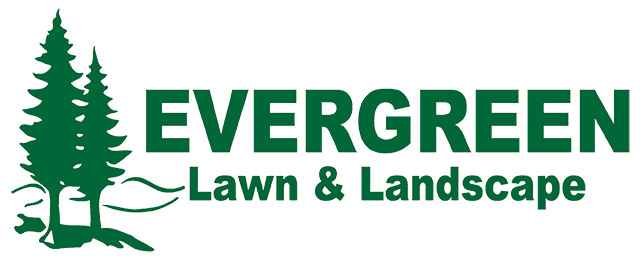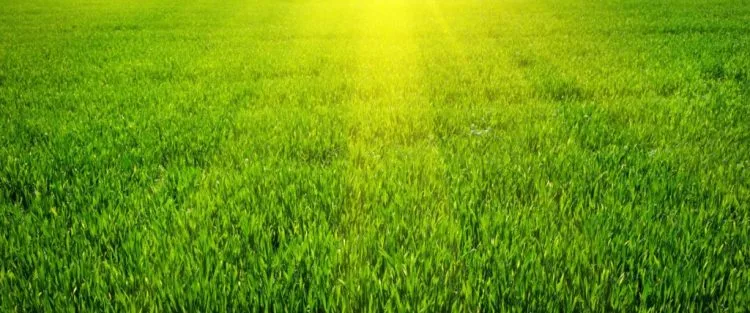Applying fertilizer in fall helps your lawn recover from the stresses of the summer. The heat and drought conditions of summer can take a toll on your grass, leaving it yellow and patchy. Fertilizing in fall gives your lawn the nutrients it needs to repair itself and start growing strong and green again.
Investing in a general clean-up service is another necessary part of preparing for winter weather. Cleaning up fallen leaves, trimming trees and shrubs, and applying a lawn winterizer are all included in the fall clean-up service that we provide at Evergreen Lawn and Landscape.
Fall is also a good time to fertilize because the cooler temperatures give the fertilizer a chance to work its way into the soil without being quickly absorbed by the heat. This means that the fertilizer will be available to your lawn for longer, giving your grass a slow and steady supply of nutrients.
The best time to apply fertilizer in fall is during a four-week window that begins mid-September and ends mid-October. This gives the fertilizer plenty of time to work its way into the soil before the grass starts growing slower in the cooler weather.
What Happens if You Don’t Fertilize?

If you don’t fertilize your lawn in the fall, it will likely become thin and yellow. The grass will have difficulty recovering from summer stress, and it may not be able to withstand the winter cold. A lack of nutrients can also make your lawn more susceptible to disease.
Contact Evergreen Lawn and Landscape for help with fertilization and weed control today.
Get Your Soil Tested
If you’re not sure whether your lawn needs to be fertilized, the best thing to do is get a soil test. This will tell you what nutrients are already in the soil and what your lawn might need. You can get soil test kits at most nurseries and garden centers.
RELATED TIP: Preparing Lawn for Fall
Know Your Grass Type

When you’re fertilizing your lawn, it’s important to know what type of grass you have. Different grasses have different fertilizer needs, so using the wrong type of fertilizer can actually do more harm than good. For example, if you have cool-season grass like Kentucky bluegrass, you should use a fertilizer with higher nitrogen content. But if you have warm-season grass like Bermuda, you should use a fertilizer with less nitrogen.
Qualities of a Good Fertilizer
When you’re looking for a lawn fertilizer, you should keep a few things in mind.
First, it’s important to choose a fertilizer that’s appropriate for your grass type.
Second, you should look for a fertilizer with a slow-release formula. This means that the nutrients will be released slowly over time, giving your grass a steady supply.
And finally, you should choose a fertilizer that’s low in phosphorus. This is because most lawns often already have enough phosphorus, and too much can actually be harmful.
NPK: What Does It Mean?
When you’re looking at fertilizers, you might notice that they have a set of numbers on the label. This is the fertilizer’s NPK ratio, which tells you each nutrient’s percentage by weight.
The first number is the percentage of nitrogen. The second number is the percentage of phosphorus, and the third number is the percentage of potassium.
For example, a fertilizer with an NPK ratio of 10-10-10 contains 10% nitrogen, 10% phosphorus, and 10% potassium.
The Problem with Phosphorous
As we mentioned before, phosphorus is an important nutrient for your lawn. But too much phosphorus can actually be harmful.
Excess phosphorus can lead to water pollution and encourage the growth of algae and weeds. So when you’re choosing a fertilizer, be sure to choose one that’s low in phosphorus.
Inorganic vs. Organic Fertilizer
When you’re fertilizing your lawn, you can choose either inorganic or organic fertilizer.
Inorganic fertilizer is made from synthetic materials and is usually cheaper than organic fertilizer. But some people prefer organic fertilizer because it’s made from natural materials and it’s better for the environment.
Organic fertilizer is made from things like manure, compost, and bone meal. It releases nutrients slowly over time, so it’s a good choice for lawns that need a steady supply of nutrients.
But because organic fertilizer is made from natural materials, it can be more expensive than inorganic fertilizer. It can also be more difficult to find.
Wrapping Up

Keeping up with regular lawn maintenance is one way to ensure that your lawn stays healthy year-round. Evergreen Lawn and Landscape offers a weekly or bi-weekly lawn maintenance service that includes mowing, edging, and blowing.
Fertilizing your lawn is an important part of lawn care, but it’s important to do it right. Be sure to choose a fertilizer that’s appropriate for your grass type, and be careful not to use too much. A little fertilizer can go a long way!



Comments (0)
Thanks for your comment!
Thanks for your feedback! Your comments have been successfully submitted! Please note, all comments require admin approval prior to display.
Error submitting comment!
There is a problem with your comment, please see below and try again.